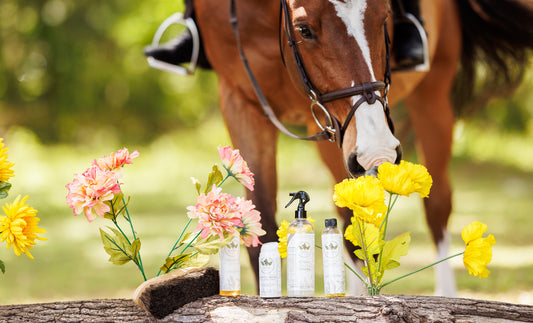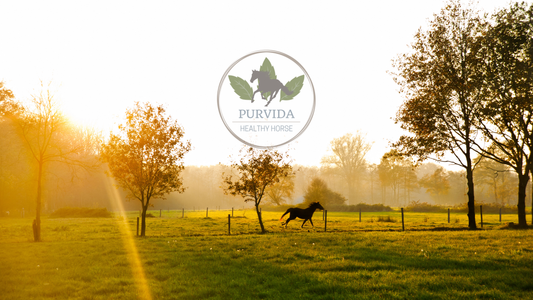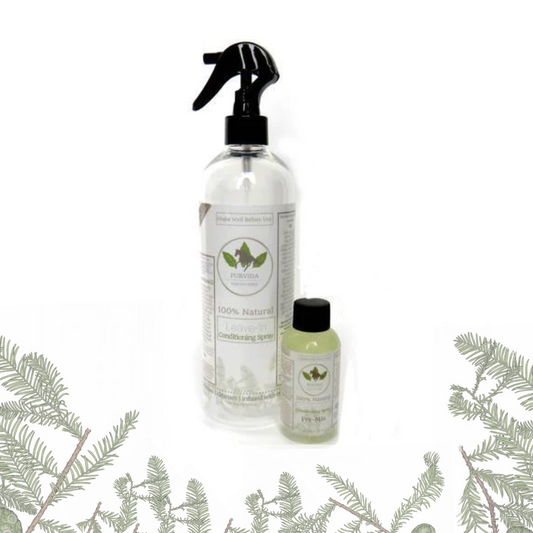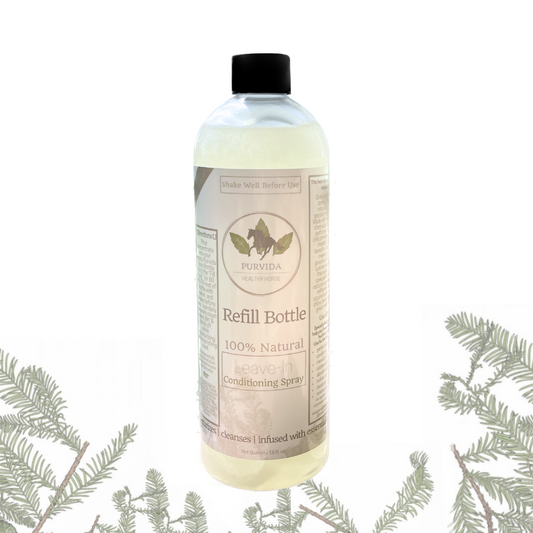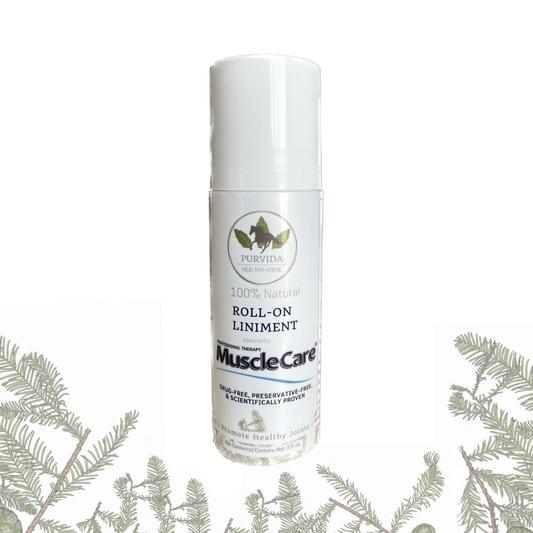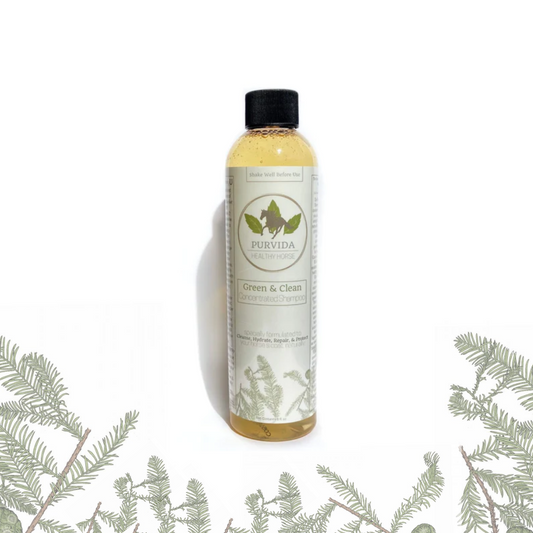What is it with horses and skin issues this time of year? We've all been there, and right now, we're heading into the hottest part of the year; when sweat, humidity, and moisture of any kind can all increase the likelihood of an outbreak. Whether your horse is in work or just exposed to moisture, they can all be at risk of a fungal infection. So this month, we sat down with a professional, Dr. Stephanie Caston, DVM, to gather up some best practises for preventing your horse's summer skin issues, as well as how to identify and treat them if they do pop up.
Common Issues and Causes
Summer skin issues can be caused by a variety of things including fungi, bacteria and insect bites, and according to Dr. Caston, "anything that damages the skin or carries bacteria/fungus can set the stage for infections and continued and secondary problems. These include biting insects, chronically wet conditions, cuts/scrapes/other trauma, contaminated tack or brushes, very dry skin, or conditions that weaken the immune system. While most of us associate skin problems with some type of fungal infection, it's actually not usually the case. In Dr. Caston's experience, "the 'skin fungus' that we often see where horses have lots of small scabs all over are actually usually caused by bacteria. Actual fungal infections of the skin are rare, unless they have an already underlying cause of skin problems, which then causes secondary fungal problems - and then it is often a yeast. One true fungal issue is ringworm, which can happen of course, but it's actually less common in the summer." Check out some of the biggest offenders of skin issues in horses that Dr. Caston comes across across below:

Dermatitis/Scratches:
This mixed bacterial, fungal, and sometimes parasitic skin condition is a major pain. Usually caused by an excessively moist or dirty environment and repeated wetting and drying of the skin (damp muddy pastures, or wet stalls). The constant moisture irritates delicate skin and cause inflammation, redness and ulcers. Coupled with mud or dirty surroundings, makes it ideal for bacteria or fungi to invade breaks in the horse's skin, causing a subsequent infection.
Sweet Itch/Fly Bite Sensitivity:
Horses can have allergic reactions to any biting insect, but the most common are no-see-ums, gnats, midges, sand flies, black flies, stable flies, and horse flies. Horses with insect bite allergies may have any combination of hives, itchiness, hair loss, and dermatitis.
Summer Sores:
These result from a complex association between the horse, the stomach worm and its intermediate hosts, and flies. In the normal stomach worm life cycle, flies pick up the stomach worm larvae in horse manure, old bedding, rotten feed, etc., and deposit them near the horse’s mouth. The horse ingests the larvae that travel to the stomach and, in approximately two months, mature into adult worms that usually cause very little damage to the horse. The adults lay eggs that are passed in the horse’s manure. Flies pick up the hatched larvae and cycle starts all over again.
The problem occurs when the stomach worm larvae are deposited by house, stable or face flies that feed on fresh wounds or areas of moisture. The larvae cannot mature into adult worms, so they migrate around in the horse’s wound, causing local inflammation and severe itching. This results in the horse chewing on the lesion and proud flesh begins to develop, resulting in a non healing lesion that can last for years and gets worse over time.
Summer sores have a “greasy” appearance with blood-tinged fluid draining from them and often contain yellow or white calcified “rice grain-like” material. If left untreated, the lesions usually regress during winter months and appear to be healing only to flare up again in the spring.
Sunburn:
Just like us, horses can also be effected by the sun's rays. In most horses, the only harm caused by sunburn is occasional discomfort, redness and peeling. However, repeated damage can cause significant long-term problems. The pigmentation in hair and skin protects against the penetration of ultraviolet light, so any non-pigmented horse or an animal with white-skinned areas is prone to sunburn damage. It can result in thickening and scaling on the surface of the skin, known as keratosis, which can sometimes transform to skin cancer — squamous cell carcinoma.
Rainrot:
Rain rot is a bacterial infection that typically occurs on the back and is common in the spring and fall, or any time your horse spends a lot of time in an overly damp environment. Hair takes on a dull appearance, feels waxy to the touch, and breaks off easily in chunks. The dermatophilus congolensis bacteria which causes this condition can cause an inflammatory infection resulting in lesions along your horse's skin and thrives on and spreads via moisture, making sweaty backs under dirty saddle pads an ideal site for occurrence.
Ringworm:
One true fungal issue is ringworm, and while it can happen in the summer, it is much more common in the spring and fall. A fungus is a type of organism that breaks down and feeds on the substance it lives on, and produces reproductive spores that enable it to spread easily. The fungus that is responsible for most cases of equine ringworm is Trichophyton equinum, which is particularly adapted to horses. Rapid diagnosis and treatment are essential in order to prevent further spread, which can occur very quickly. The first signs of ringworm become evident from six days to six weeks after contact with the infection. The number of ringworm patches can vary from one to many, depending on the horse, and are often seen on areas subject to local trauma, such as rubs from tack, rugs and riders’ boots. Usually, circular tufts of hair 1–2cm in diameter are seen standing up against the lie of the horse’s coat, sometimes surrounded by a raised ring. If you look closely, you’ll often see a cigarette ash-like deposit between the hairs. After approximately six days, the hairs can be easily plucked away, leaving silvery, scaly skin beneath. Later, as the healing process is underway, new hairs grow within the centre of the hairless circles, giving the classic ringworm appearance.
Prevention
You know the old saying, "an ounce of prevention is worth a pound of cure" and if you've been battling your horse's summer skin issues, you know that definitely rings true in this case. Keep your horse's skin as healthy as possible by following the tips below:

Regular Grooming:
Your horse's summer skin issues can crop up just about anywhere on their body, that's why thorough, regular grooming is your starting block to both preventing and identifying a potential flare-up before it becomes a serious issue. Pro-Tip: Implement a topical anti-bacterial spray to your daily grooming routine, like our All-In-One Grooming Spray, to kill bacteria and gently & thoroughly cleanse your horse's coat.
Weekly bathing and rinsing after every ride:
If it's warm enough, at least hose off your horse's legs and saddle areas after removing tack to wash away any sweat. Simply allowing the sweat to dry on its own is not sufficient as the bacteria can irritate your horse's skin. Pro-Tip: At least once per week, bathe your horse with an anti-bacterial or medicated shampoo. Our Green N' Clean Concentrated Shampoo does a great job at killing fungus and bacteria, soothing skin, and deep-cleaning your horse's coat without drying it out (as this causes its own issues). Its concentrated formula also allows you to apply a stronger dose to problem areas, like your horse's legs, pastern, or belly.
Wash Saddle Pads Often and Clean Tack Regularly and DON'T SHARE:
Both saddlepads and tack serve as a physical vector for fungal spread so it's important to clean them regularly and ensure you don't share equipment between horses. Sharing tack, saddlepads or grooming equipment, with other horses can easily allow fungus to spread throughout the barn.
Routinely Clean Brushes:
Do you and your horse a favor and schedule time at least once a month to clean your brushes. Pro-Tip: let your brushes soak in water with dilute bleach. Usually 1 part bleach to 9 parts water will do the trick. Let them soak for at least 1 hour and be sure to rinse thoroughly & air-dry afterwards.
Reduce Moisture:
Moisture is a big culprit for bacteria growth, and regardless of how diligent you are with the items above, horses constantly kept in dirty, muddy conditions, or who sweat a lot underneath saddlepads, boots/wraps during work can be susceptible to skin issues if they are not properly cared for. Pro-Tip: Aside from keeping your barn and pastures as clean/dry as possible, using breathable saddlepads, boots, and wraps, can significantly help with preventing sweat-related issues. Check out Anatomeq's collection of innovative equine wear for some great breathable options.
Treatment and Knowing When to Call Your Vet
If you do notice a potential issue or flare up when grooming your horse, keep the effected area as clean and dry as possible. Bath with an antibacterial shampoo and ensure you dry your horse's legs thoroughly before returning them to their stall. Keeping the irritated skin clean, dry, and away from insects is also essential to the healing process. This means keeping your horse's stall as clean and dry as possible, avoiding turn out during damp/dewy times of day, and using a fan in your horse's stall to reduce stable flies. Your horse's summer skin issues can sometimes be difficult to diagnose, but the good news is that most common fungal, bacterial and insect-related conditions often respond well to topical treatment. However, some causes of skin lesions can look similar, but are treated differently, so any time there is no response to treatment or if it's getting worse, it's a good idea to try and get a diagnosis from your veterinarian.
Mild cases of skin issues may not require veterinary attention, and early detection is the best medicine - check your horse's legs frequently for early signs of infection and routinely groom your horse to prevent mud build-up on legs-- but if you do see a potential flare up, it's important to stay on top of it by following the steps below:
Quick Facts for Treatment of the Most Common Skin Issues:
-
Dermatitis - rule of thumb: don't scratch the scratches! If possible, Clip away any excess hair from the infected areas on your horse, being careful not to cut the scabbing. Then cleanse with an antibacterial shampoo, like our Green N' Clean Shampoo, dry thoroughly, and apply topical antibacterial treatment. After bathing, scabs can be gently massaged off, but it's important not to pick at them.
-
Fly Bite Sensitivity - Apply a soothing topical treatment. Our All-In-One Grooming Spray is a great option here as it contains witch hazel to soothe irritated skin, as well as cedarwood essential oil, a great natural insect repellent that also has anti-bacterial properties. This reduces irritation, soothes skin, and keeps the flies from inflicting further discomfort.
-
Summer Sores - Treatment for this one is often difficult and can require a number of approaches. In small lesions, deworming the horse with either an ivermectin or moxidectin paste dewormer will kill the worm larvae and allow the sore to heal. It may also be beneficial to wrap the lesion to protect the wound and prevent the horse from chewing.
-
Sunburn - Apply a soothing topical treatment to the effected area followed by sunscreen to prevent further skin damage
-
Rainrot - Apply a topical antibacterial product. Again, our All-In-One Grooming Spray is a great treatment option as it not only kills bacteria, but soothes skin and promotes hair re-growth.
-
Ringworm - Clip away any excess hair from the infected areas on your horse. Then, gently wash these areas with an anti-fungal shampoo. Allow the shampoo to soak into the skin to effectively kill the fungus. After washing, make sure to thoroughly dry your horse's skin, then apply a topical anti-fungal product.

If you're not sure exactly what you're dealing with or your horse's summer skin issues start to worsen, contact your veterinarian as soon as possible. Dr. Caston typically diagnoses skin lesion causes "with a simple exam or by its appearance, but it can sometimes be difficult to identify what the cause of a skin lesion is, especially if there are secondary complicating factors. For example, some horses may get a scratch or cut, and then later develop secondary bacterial or fungal infection, or a summer sore. Diagnosis may require skin scrapings or biopsies by your veterinarian." In severe cases, you might need to treat the infection with antibiotics and corticosteroids.
About the Expert: Dr. Stephanie Caston, DVM
A huge thank you goes out to Dr. Caston, for providing so much valuable insight into our horse's summer skin issues. Dr. Caston is an LA Surgeon with Performance Equine Vets and has been actively involved in numerous research projects including, complicated lameness, orthopedic and musculoskeletal surgeries, emergency surgical colic interventions, advanced imaging and regenerative medicine. She has authored over 150 scientific papers and book chapters on topics ranging from orthopedic and musculoskeletal surgery, developmental orthopedic disease, minimally invasive procedures, advanced upper airway surgical techniques, as well as regenerative therapies including Stem Cells, IRAP and PRP. As a recognized specialist in her field, Dr. Caston is an invited speaker in both national and international conferences on various topics each year. Dr. Caston is also involved as an active competitor in Three-Day Eventing. She utilizes this unique knowledge daily as she applies her experience as a rider to her profession as a Veterinarian. When she is not working, Dr. Caston enjoys competing her own horses in eventing, fox hunting, and spending time with her dogs.




